Most stable radical is
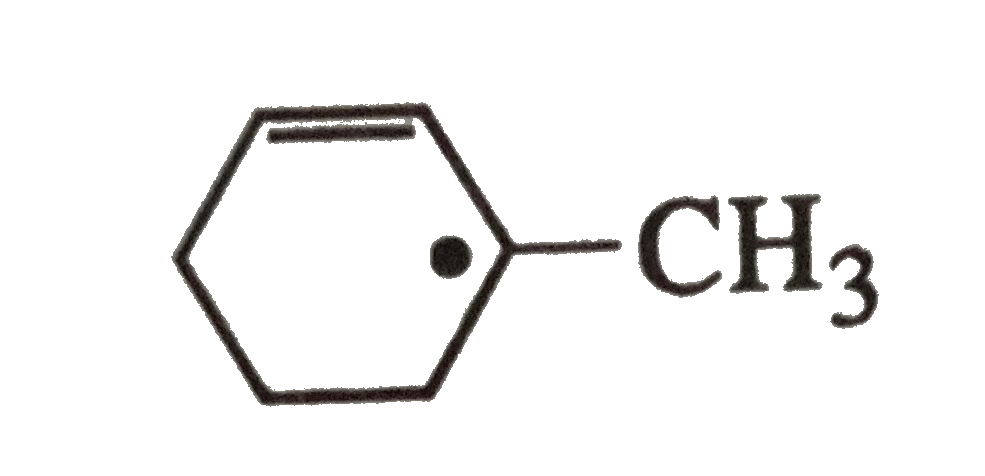
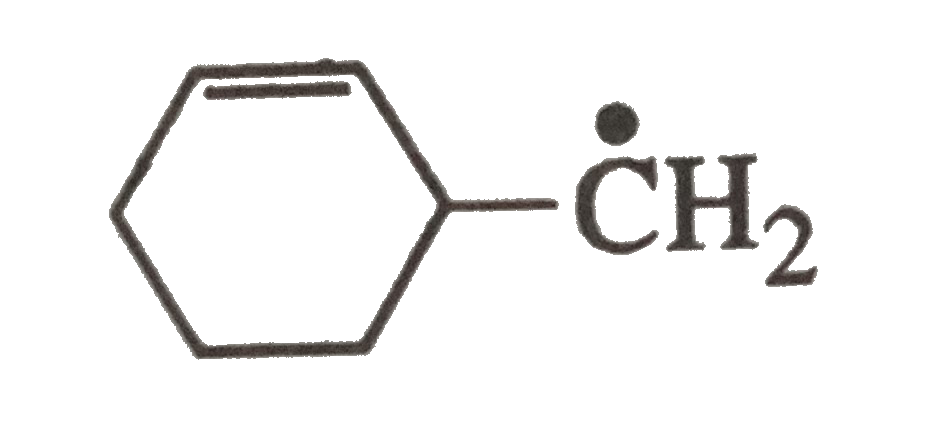
CH2=CH⋅CH2
CH2=⋅CH.
The correct Answer is:C
To determine which radical is the most stable among the given options, we will analyze the stability based on resonance and hyperconjugation effects. Here’s a step-by-step solution:
Step 1: Identify the Radicals
First, we need to identify the structures of the radicals given in the options. Each radical will have an unpaired electron, which is crucial for determining stability.
Hint: Look for the carbon atoms that have an unpaired electron (dot) in their structure.
Step 2: Analyze Resonance
Next, we will check if the radicals can participate in resonance. Resonance occurs when there are multiple valid Lewis structures for a molecule, allowing the electron density to be delocalized.
- Radical A: Has a double bond adjacent to the radical, allowing resonance.
- Radical B: No resonance is possible as there are no adjacent double bonds.
- Radical C: Similar to Radical A, it has a double bond adjacent to the radical, allowing resonance.
- Radical D: No resonance is possible here as well.
Hint: Identify which radicals have adjacent double bonds that can stabilize the unpaired electron through resonance.
Step 3: Compare Resonance Structures
For the radicals that can resonate (A and C), we will draw their resonance structures to see how many contributing structures can stabilize the radical.
- Radical A: Can form several resonance structures, contributing to its stability.
- Radical C: Also forms resonance structures, but we need to analyze how many are identical and how they compare to Radical A.
Hint: Count the number of resonance structures and check if they are identical or not.
Step 4: Analyze Hyperconjugation
Next, we will consider hyperconjugation, which involves the interaction of the radical with adjacent C-H bonds. The more alkyl groups attached to the radical, the more stable it becomes due to hyperconjugation.
- Radical A: Has multiple adjacent hydrogen atoms contributing to hyperconjugation.
- Radical C: Also has adjacent hydrogen atoms, but we need to count them.
Hint: Look at the number of adjacent hydrogen atoms (alpha hydrogens) that can stabilize the radical through hyperconjugation.
Step 5: Determine the Most Stable Radical
After analyzing resonance and hyperconjugation, we can conclude which radical is the most stable.
- Radical A and C have resonance, but if Radical C has more identical resonance structures and more alpha hydrogens, it will be more stable than Radical A.
- Radicals B and D do not have resonance and are less stable.
Conclusion: Based on the resonance and hyperconjugation analysis, Radical C is the most stable radical.
Final Answer: The most stable radical is Option C.
First, we need to identify the structures of the radicals given in the options. Each radical will have an unpaired electron, which is crucial for determining stability.
Next, we will check if the radicals can participate in resonance. Resonance occurs when there are multiple valid Lewis structures for a molecule, allowing the electron density to be delocalized.
- Radical B: No resonance is possible as there are no adjacent double bonds.
- Radical C: Similar to Radical A, it has a double bond adjacent to the radical, allowing resonance.
- Radical D: No resonance is possible here as well.
For the radicals that can resonate (A and C), we will draw their resonance structures to see how many contributing structures can stabilize the radical.
- Radical C: Also forms resonance structures, but we need to analyze how many are identical and how they compare to Radical A.
Next, we will consider hyperconjugation, which involves the interaction of the radical with adjacent C-H bonds. The more alkyl groups attached to the radical, the more stable it becomes due to hyperconjugation.
- Radical C: Also has adjacent hydrogen atoms, but we need to count them.
After analyzing resonance and hyperconjugation, we can conclude which radical is the most stable.
- Radicals B and D do not have resonance and are less stable.
Topper's Solved these Questions
- BASIC PRINCIPLES OF ORGANIC CHEMISTRYBOOK - DINESH PUBLICATIONCHAPTER - BASIC PRINCIPLES OF ORGANIC CHEMISTRYEXERCISE - SELECTED STRAIGHT OBJECTIVE TYPE MCQS
64 Videos
- BASIC PRINCIPLES OF ORGANIC CHEMISTRYBOOK - DINESH PUBLICATIONCHAPTER - BASIC PRINCIPLES OF ORGANIC CHEMISTRYEXERCISE - LINKED COMPREHENSION TYPE MCQS
10 Videos
- BASIC PRINCIPLES OF ORGANIC CHEMISTRYBOOK - DINESH PUBLICATIONCHAPTER - BASIC PRINCIPLES OF ORGANIC CHEMISTRYEXERCISE - Matrix Type Questions
2 Videos
- ALKALI EARTH METALSBOOK - DINESH PUBLICATIONCHAPTER - ALKALI EARTH METALSEXERCISE - Unit test-12
5 Videos
- BIOMOLECULESBOOK - DINESH PUBLICATIONCHAPTER - BIOMOLECULESEXERCISE - MATRIX - MATCH TYPE
8 Videos
Similar Questions
Knowledge Check
Most stable radical among the following is
A B
B C
C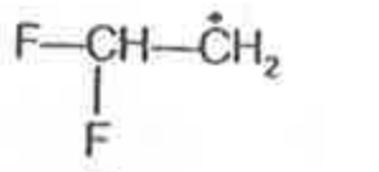 D
D
Most stable radical among the following is :
A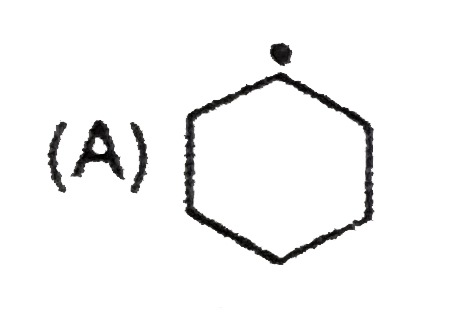 B
B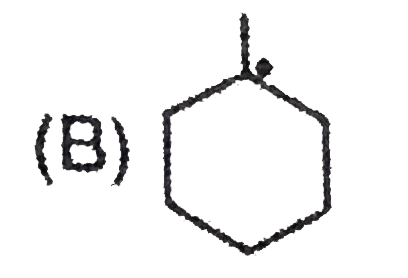 C
C D
D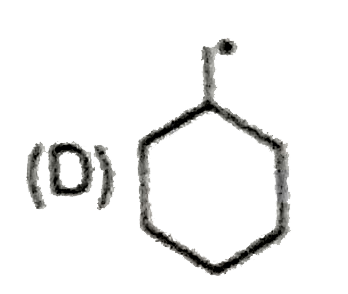
Most stable radical among the following is:
A B
B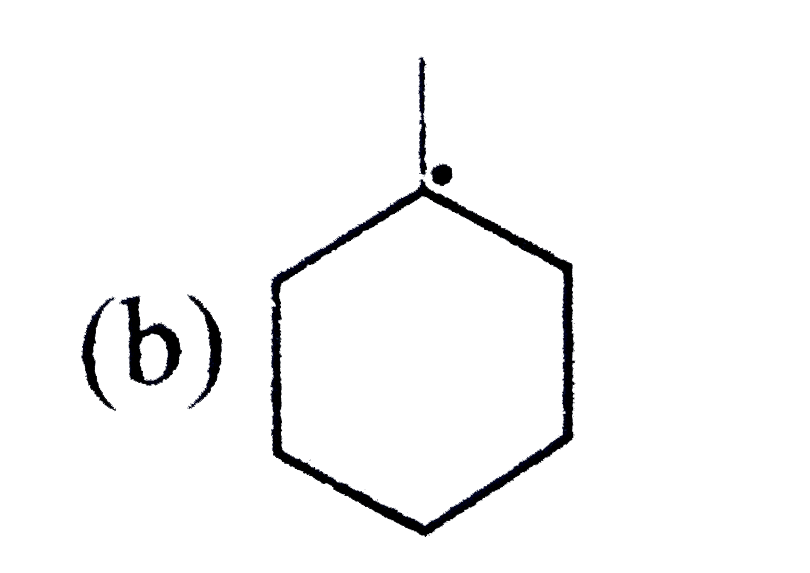 C
C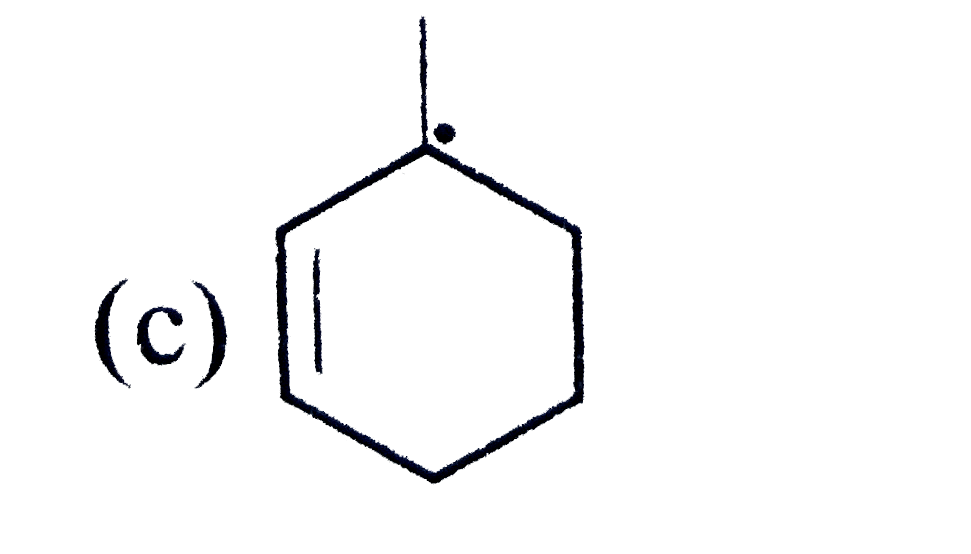 D
D
